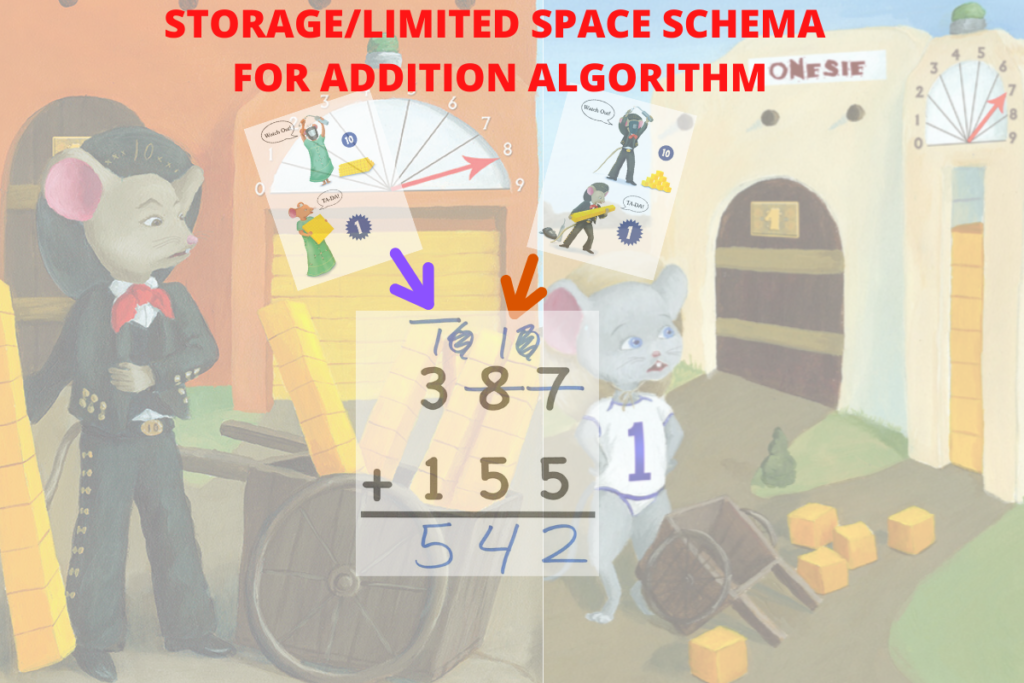‘Schema’ as described in this article refers to the prior knowledge and life experience a student brings to a novel task which will assist her or him in making connections to the task to build new understanding. Often in math related articles, ‘schema’ refers to ‘schematic’ diagrams or models, for number stories, but in this article ‘schema’ is used as it is in Language Arts – prior knowledge/experience.
In the upper elementary grades, students are generally using the most efficient method of addition, the standard algorithm. Often, the computations require regrouping which makes the process more complicated and abstract. If students are performing the algorithm with no connected schema, they have many opportunities to make errors.
It is for this reason that it is so important to tie some prior knowledge/experience to the abstract process of the algorithm. The schema that works well with the addition algorithm and particularly addition with regrouping is the schema of ‘storage with limited space’. Most students have some experience with storing objects or items in limited space. They have may have tried to combine new shirts to a drawer that already had shirts in it. The number of shirts increased, but what did they do with the spillover of shirts that didn’t fit into the drawer? It sounds a lot like the addition algorithm and addition with regrouping, doesn’t it?
Schema in Action


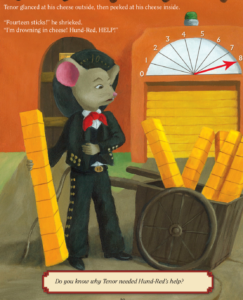

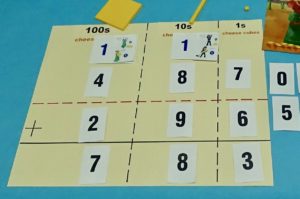
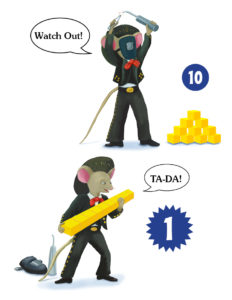
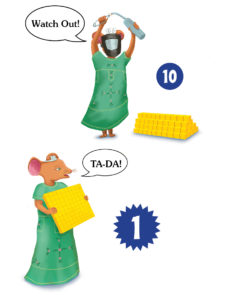
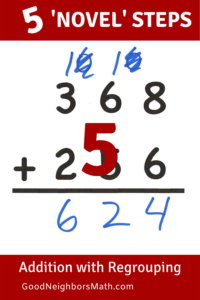
Luckily for the math community, there is a math picture book that uses the schema of storage/limited space – The Good Neighbors Store an Award, so it is a great way to introduce the schema to students. In the story, three mice, of varied size with varied size cheese blocks, must work together to insure all the cheese blocks they received as an award can be combined and stored with their existing cheese blocks. The story’s narrative mirrors the steps of the standard algorithm and addition with regrouping as demonstrated with base ten blocks.
The “5 ‘Novel’ Steps to Teach Addition with Regrouping – Conceptually” incorporates the storage/limited space schema throughout, which make the steps so powerful and lasting. By the time students are ready to learn the addition algorithm, most have the understanding that each place value can hold up to 9 units, but for those that do not, The Good Neighbors Store an Award provides a scaffold – the capacity of each mouse’s house to hold up to 9 cheese blocks. To emphasize the point, you can have students draw a line (representing a roof line) either above the top addend – indicating that the place value has the capacity to hold the quantity, or through the top addend – indicating that the place value does not have the capacity to hold the quantity (some is sticking out) and regrouping is needed.
When students add using their schema and scaffolds from the story, they combine the addends from a given place value and determine if it has enough storage space to hold all the units. If not, students must regroup 10 of the units into 1 bigger unit of the next place value and keep the remaining units in the original place value. The addition process continues until units from all place values have been combined and regrouped if necessary.
By the time students are ready to learn the addition algorithm, most have the understanding that each place value can hold up to 9 units, but for those that do not, The Good Neighbors Store an Award provides a scaffold – the capacity of each mouse’s house to hold up to 9 cheese blocks.
The icon for the regrouping process in the storage/limited space schema for addition is the cheese torch. The cheese torch is the tool the characters from The Good Neighbors Store an Award use to melt 10 smaller blocks of cheese into 1 of their bigger sized block of cheese. Even in Step 5 of the “5 ‘Novel’ Steps to Teach Addition with Regrouping – Conceptually” where students eventually solve computations numerically with no template, the cheese torch icon continues to be emphasized. Students when needing to regroup, are instructed to write the number 10 (the 10 units that need to be regrouped) above and in between the original place value and the next bigger place value. Then students are instructed to either scribble over or erase the 0 in the number 10 and say aloud or in their head, “Ta Da!” – representing the idea that they just regrouped, or melted, 10 smaller units into 1 bigger unit.
Establishing a conceptual schema for the addition algorithm benefits all students, but particularly students who struggle in math and students with learning disabilities. It is especially important to help these students make connections to abstract concepts/skills such as the addition algorithm and addition with regrouping so they can retain the concepst/skills for the long-term.
